| Pages:
1
2
3
4
5 |
careysub
International Hazard
    
Posts: 1339
Registered: 4-8-2014
Location: Coastal Sage Scrub Biome
Member Is Offline
Mood: Lowest quantum state
|
|
BTW - melting lead for a detector shield seems like wasted effort. Why not just pour in lead shot?
Random sphere packing density is about 0.64, so you would need to increase the volume of the shield by about 50%, the final density would be about
7.26, if you used plaster to fill in the space and make it a solid block, the density would increase to 7.66. Vibrating the lead might increase the
density somewhat by causing it to settle.
|
|
|
neptunium
National Hazard
   
Posts: 989
Registered: 12-12-2011
Location: between Uranium and Plutonium
Member Is Offline
|
|
ahem I think you got the wrong page budd...
|
|
|
careysub
International Hazard
    
Posts: 1339
Registered: 4-8-2014
Location: Coastal Sage Scrub Biome
Member Is Offline
Mood: Lowest quantum state
|
|
If directed to me: do I not read on this thread:
"I have order a steel shield inside of what i have melted some lead for the detector... it cost me way more than i thought it would and left a bitter
taste in my mouth.
...
I am not finished with the lead melting process (over 200lbs is involve) the whole set up is looking a lot better than before ."
?
|
|
|
neptunium
National Hazard
   
Posts: 989
Registered: 12-12-2011
Location: between Uranium and Plutonium
Member Is Offline
|
|
my apologies Careysub I don't know what I was thinking....
Yes the lead shots seems like a good idea... I have already started with the melting and its almost done .
WalMart has this stainless steel container thick enough to melt lead in on an open flame or electric stove.
i should have thought of that .... in the future.
|
|
|
neptunium
National Hazard
   
Posts: 989
Registered: 12-12-2011
Location: between Uranium and Plutonium
Member Is Offline
|
|
just received a sample of Coffinite U(SiO4) the Actinium is way up in this one ! but the 3 peaks for Uranium and Radium are clear.
Also, notice the Pb210 at 46Kev...
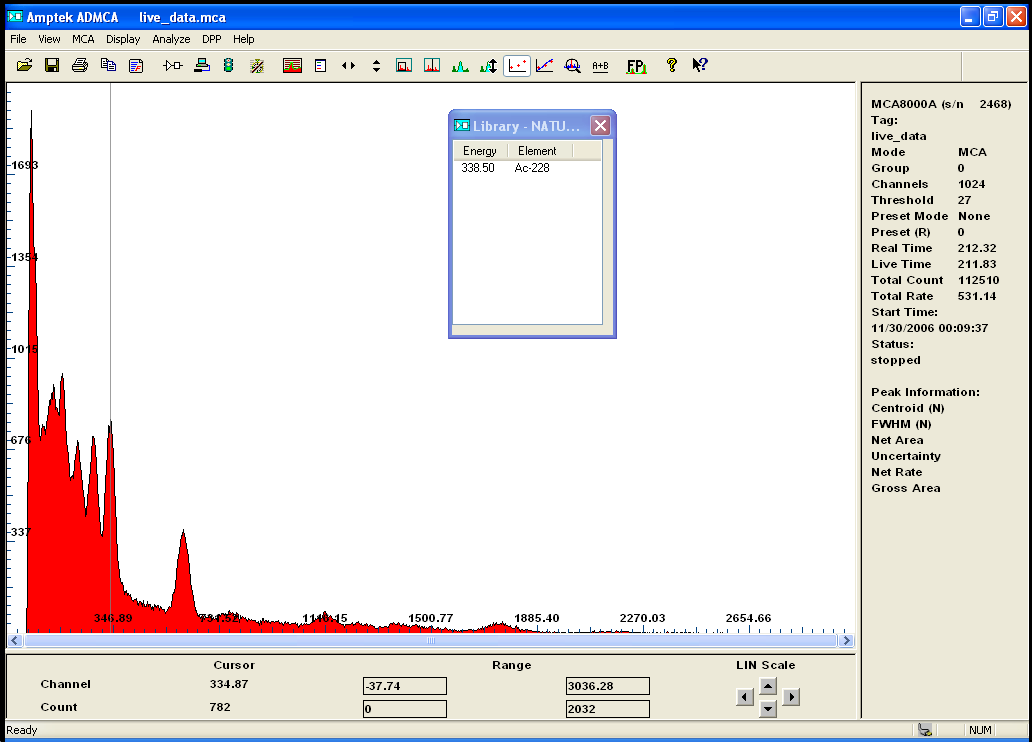
|
|
|
IrC
International Hazard
    
Posts: 2710
Registered: 7-3-2005
Location: Eureka
Member Is Offline
Mood: Discovering
|
|
neptunium have you ever tried this software? If so how does it compare to software such as the program you are using.
http://sourceforge.net/projects/opengamma/
I find what you are experimenting with to be very interesting but I admit I have never accumulated the equipment and software to actually do it. So I
am thinking about building such a device but I have a question. Do you have to look at the energy peaks and then compare to tables of various gamma
emitters to identify the element or isotope or does your software have graphs which indicate this (built in tables)? I notice in the image you posted
it merely shows the peaks and energy levels.
http://www.amptek.com/products/gamma-rad5-gamma-ray-detectio...
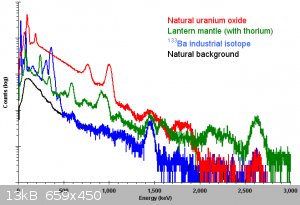
As example in this graph from their page one would not know merely by looking at the image what materials were shown without the inclusion to the
graph stating UO2, 133 Ba, Th (lantern mantle). When you are operating your equipment is there a feature where identification is given or as I asked
do you have to compare your energy readings to charts? I am seriously thinking it is time I had such capability but I need to learn more in order to
build it and pick the right software. Buying a commercially made setup is beyond my budget for mere experimenting where no money return is
anticipated, to me this is more of a fun addition to a life long hobby. I noticed the window in the image you posted showing Ac-228 but am unsure if
this is called up automatically (auto ID function). I downloaded all their software just to install and study the program operation assuming it will
run minus the specific model detectors they indicate. I noticed their page indicates the software only functions with their devices.
While I intend to build my equipment I find it helpful to first study what others have done, have you looked at the following:
http://beeresearch.com.au/
https://www.youtube.com/watch?v=xPeKkzhf2TU
[Edited on 12-12-2015 by IrC]
"Science is the belief in the ignorance of the experts" Richard Feynman
|
|
|
phlogiston
International Hazard
    
Posts: 1379
Registered: 26-4-2008
Location: Neon Thorium Erbium Lanthanum Neodymium Sulphur
Member Is Offline
Mood: pyrophoric
|
|
Once equilibrium has been reached, which should be the case in a mineral sample, shouldn't the ratios of isotopes be always the same?
Or are you comparing it to the levels of U-decay chain isotopes? Ie. is your sample's Th/U ratio higher than typical for this mineral?
[Edited on 12-12-2015 by phlogiston]
-----
"If a rocket goes up, who cares where it comes down, that's not my concern said Wernher von Braun" - Tom Lehrer |
|
|
neptunium
National Hazard
   
Posts: 989
Registered: 12-12-2011
Location: between Uranium and Plutonium
Member Is Offline
|
|
Irc,
Yes the equipment was rather expansive despite already being obsolete .
but it gets the job done !
the pocket MCA i have only runs with that particular software . i am not computer skilled enough to reprogram it or even built some adaptor hardware.
so the software is free and works well with the hardware.
Any other software would have to accept the format in which the spectrum is saved to be able to display it.
The detector i used are both temperature sensitive (not by much) but require a calibration everyday.
i use a known source of CO60 with its 2 main peak at known value to calibrate the spectrometer.
once you have the position of 2 or 3 peaks the scale readjust itself according to the energy input you`ve provided during calibration.
now you are ready for an unknown sample.
peaks will slowly rise (depending on the activity you can time the length of acquisition ex: 30 000 count total over 1 minute over 500 bq depending on
source geometry dead time etc...you get the idea)
The software come with a series of library (in analysis from the top main panel)
a few isotopes were pre installed so when a peak is at a known energy level that matches one in the library , the software flag it for you with the
little window you saw...
i also have 2 enormous book with every known isotopes and the energy of each gamma, x rays, beta and alpha, down to 0.00% probability.
there is a great software you can also download free
http://rad-decay.software.informer.com/4.0/
sorry lost the direct link.
once you`ve eliminated the very short lived like Fr and At, the very unlikely like Cm, or the truely exotic one its a lot simpler.
keep in mind that the NaI detector is very good at simple identification but with all the possible isotopes out there it is sometimes difficult or
impossible to identify one with certainty. also the lower the energy the higher the imprecision .
its fun to find K40 in your ashtray i think, or monitoring the radioactivity of grass and dirt!
Phlogiston,
No i think its a pretty standart piece of rock to be honest! its not higher or lower than any other ore U and Th are usually mined from.
a lot of isotopes will show on my spectrometer , it doesnt mean the ratio is off or it contain more or less of anything,
you are correct when you said the ratio reaches an equilibrium after a while, unless you start seperating each element, it will stay that way.
|
|
|
IrC
International Hazard
    
Posts: 2710
Registered: 7-3-2005
Location: Eureka
Member Is Offline
Mood: Discovering
|
|
Thanks I will look into that software you linked. I have had a detector in my storage for years that I never toyed with due to no access to LN2. In my
small town UFO's would be easier to locate and no doubt any source is a few hundred miles away. However it looks like your setup does not need it so I
am wondering how well my detector would function without the cooling. It states 3KV for operating voltage on the tag but I cannot find specific
listing of it on the Canberra site. It is a GC 520 Standard Electrode Coaxial Ge Detector (SEGe) with a 7935-2 portable cryostat. I have no other
equipment originally designed for it so obviously some reverse engineering of the internal circuitry and building my own circuitry is needed. All I
have is the detector itself seen in the pics. As you can see in the end view pic there is a fitting for LN2 in and another for a vent. The PDF I found
on their site does not mention my specific detector as it is old and no doubt the company is little interested in it. I have yet to find a search
function on the site.
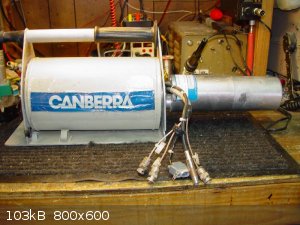 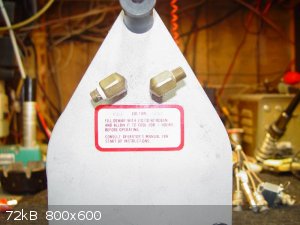
Attachment: SEGe-detectors-C40021.pdf (179kB)
This file has been downloaded 823 times
What do you think of operating this detector removed from the cryostat, using it as part of a new design. How important is the cooling to LN2
temperatures for the kind of work as you are doing, is there any chance of harming the detector running it at room temperature. Possibly I can come up
with some type of Peltier electrical cooling for it although cryonic temperatures would not be reached.
"Science is the belief in the ignorance of the experts" Richard Feynman
|
|
|
The Volatile Chemist
International Hazard
    
Posts: 1981
Registered: 22-3-2014
Location: 'Stil' in the lab...
Member Is Offline
Mood: Copious
|
|
At the very least, looks cool and great 
Would be cool to see it running if you had some LN.
|
|
|
neptunium
National Hazard
   
Posts: 989
Registered: 12-12-2011
Location: between Uranium and Plutonium
Member Is Offline
|
|
oh my god you do have the holy grail of gamma spectroscopy!!!!!!!!!!!!!!!!!!!!!!!!
DO NOT under ANY circumstances operate this detector without cooling you`ll fry it !
please tell me you have not !!!
what you have in your possession is the ultimate detector my friend!
it will (with liquid nitrogen) detect AND identify ANY and EVERY isotopes known!
the Germanium semi conductor WILL totally fry if you try to run it without its cooling .
please oh god PLEASE tell me you have NOT tried it yet ?
|
|
|
neptunium
National Hazard
   
Posts: 989
Registered: 12-12-2011
Location: between Uranium and Plutonium
Member Is Offline
|
|
is this the one for sale on ebay for like 5000 ?
|
|
|
neptunium
National Hazard
   
Posts: 989
Registered: 12-12-2011
Location: between Uranium and Plutonium
Member Is Offline
|
|
This detector requires liquid nitrogen and a preamplifier and an amplifier before the MCA
i think there is a gamma ultima from canberra capable of running it on ebay right now!
|
|
|
IrC
International Hazard
    
Posts: 2710
Registered: 7-3-2005
Location: Eureka
Member Is Offline
Mood: Discovering
|
|
No it is not on ebay, I've never even considered it before. Seldom been taken out of my storage, every few years I will look at it, search for data
until I give up, think about taking it apart to draw out all the circuitry and connections since with no data I will never be able to use it. Simply
must have a circuit diagram or the original equipment designed to go with it. No never powered, put in storage and never used. Every few years I think
about reverse engineering it then consider it may be damaged if I try and it is just too perfect to risk. So I put it away hoping someday to find the
information so I can study it fully. What is it that would fail if powered at temperatures above LN2? So far I have never found detailed information
on its internal construction, other than what Canberra shows for newer models. Do not worry I have no intention of doing anything that would harm it,
the very reason I have simply stored it forever.
Just read your post fully and so it is the Ge detector that would be damaged. Which indicates it must be very similar in design to what I see for
newer models. For a long time I thought it might be a PM type circuit with a hyperpure Ge crystal on the end but studying newer models it appears the
Ge is itself connected to the 3KV. So what you say makes sense. But not to worry I am good at what I do in electronics and would never connect
voltages blindly to several connectors without understanding the circuit complete and having knowledge about the device itself. Which is why its lived
in storage so long. I had considered the cooling was about noise not protection. Are you saying the Ge cylinder would avalanche under voltage unless a
minimum temperature is reached? Explains why the label stating do not operate until cooling has been going for 4 hours is on it.
[Edited on 12-13-2015 by IrC]
"Science is the belief in the ignorance of the experts" Richard Feynman
|
|
|
neptunium
National Hazard
   
Posts: 989
Registered: 12-12-2011
Location: between Uranium and Plutonium
Member Is Offline
|
|
the semi conductor which is a tiny rectangle inside the cylinder, operates on the displacement of electron within the matrix , when a gamma ray hits
it, a bunch of electron (proportional in number according to the incident energy of the gamma) a series of electrons and holes appear within the
matrix and the electrons move to the anode and the holes move to the cathodes, generating a small current proportional to the incident gamma. thus the
signal is very sensitive .
the downside is that the detector size and density are both low enough to be inefficient when compare to a scintillation detector but the upside is
that the signal is very accurate and represent the gamma energy very faithfully .
when used without cooling ,the Ge matrix is vibrating and the high voltage generate a wide current that destroys the arrangement of Germanium atom
within the matrix permanently. once it has been powered without cooling, it can never be operated again.
|
|
|
IrC
International Hazard
    
Posts: 2710
Registered: 7-3-2005
Location: Eureka
Member Is Offline
Mood: Discovering
|
|
Interesting. After reading your concerns I did a little searching and found this:
https://en.wikipedia.org/wiki/Semiconductor_detector
"The major drawback of germanium detectors is that they must be cooled to liquid nitrogen temperatures to produce spectroscopic data. At higher
temperatures, the electrons can easily cross the band gap in the crystal and reach the conduction band, where they are free to respond to the electric
field, producing too much electrical noise to be useful as a spectrometer. Cooling to liquid nitrogen temperature (77 K) reduces thermal excitations
of valence electrons so that only a gamma ray interaction can give an electron the energy necessary to cross the band gap and reach the conduction
band. Cooling with liquid nitrogen is inconvenient, as the detector requires hours to cool down to operating temperature before it can be used, and
cannot be allowed to warm up during use. Ge(Li) crystals could never be allowed to warm up, as the lithium would drift out of the crystal, ruining the
detector. HPGe detectors can be allowed to warm up to room temperature when not in use."
Which indicates the type most easily damaged when warm is Ge(Li), where the Li migrates such that it cannot even be stored when not in use at room
temperature since the Li will still migrate. However mine is not the Li type so I lucked out there I have stored this thing for years unused. Appears
it can handle that just fine but when powered we are back to the scenario you just mentioned. Sadly that means all I can do is store it I am never
going to easily obtain LN2 around here and I have no intention of trying anything that can harm, its simply too valuable. Back to my PM NaI/Tl project
I guess. You said it is a tiny rectangle but the specs I find at Canberra all indicate it is much larger. Look at the pic at the top in HPGe_alt.pdf,
this is what the Ge detector looks like, fairly large.
Attachment: HPGe_alt.pdf (662kB)
This file has been downloaded 1133 times
Attachment: Germanium_Detectors_Manual.pdf (798kB)
This file has been downloaded 1435 times
Attachment: note8.pdf (826kB)
This file has been downloaded 1376 times
Attachment: GAMMA-X.pdf (1.8MB)
This file has been downloaded 1064 times
Attachment: GE_pp1-50.PDF (638kB)
This file has been downloaded 888 times
http://www.canberra.com/products/detectors/germanium-detecto...
Another example, not a tiny X but much larger and cylindrical.
Attachment: SEGe-detectors-C40021.pdf (179kB)
This file has been downloaded 1307 times
[Edited on 12-13-2015 by IrC]
"Science is the belief in the ignorance of the experts" Richard Feynman
|
|
|
neptunium
National Hazard
   
Posts: 989
Registered: 12-12-2011
Location: between Uranium and Plutonium
Member Is Offline
|
|
Yes its a real pain...but for the classic Germanium semi conductor detector As long as you don't apply high voltage at room temperature you should be
fine.
Some device called a cryocooler are sometimes available on ebay. The word got out a few years ago (when they were selling for 200 bucks ) that one may
generate liquid nitrogen with one of these device .and now its difficult to get one under 500 dollars.
Anyway . by simply bringing the cold part of a cryocooler directly in contact with the cooling can inside the LN2 dewar, it should be possible to use
without LN2.
Indeed, one would have to be careful and thermally isolate the 2 part and another power supply had to be brought in for the cryocooler, which has to
be cooled itself (air or water cooling) and as always wait long enough for the detector to reach its operating temperature.
I thought about doing it for a while. .
|
|
|
IrC
International Hazard
    
Posts: 2710
Registered: 7-3-2005
Location: Eureka
Member Is Offline
Mood: Discovering
|
|
I looked at prices for coolers, grand range or higher. Combine that with a grand for the cheapest used preamp, no access to LN2 here, thinking I
really should just put it on fleabay. Pointless to just store it forever, will never have it running. Maybe I can just buy another NaI/Tl crystal and
finish my project which came to a halt when I kept getting bad NOS mica window tubes. Never got a reply on my restoring crystal questions and I have
seen decent ones for what they want to restore the one I have. If nothing else getting a good one frees me up to try my hand at fixing the old one for
another PM tube. Those I have several of as well as the plastic scintillators but personally the plastic scintillators are crap compared with NaI/Tl
which will detect Gamma in the range of 130 Kev to 1.3 Mev. The plastic may be good enough standing at ground zero but not very useful for high
sensitivity. I have several of those of varying types. Not impressed at all compared to my old but still working Precision 111B and Mount Sopris
SC129. These I converted with inverters to operate on 4 C cells to replace three Hg filament batteries, a 22.5 and two 67.5 volt batteries.
Another circuit which works well for the PM tube:
Attachment: scintillation_probe.pdf (99kB)
This file has been downloaded 757 times
"Science is the belief in the ignorance of the experts" Richard Feynman
|
|
|
neptunium
National Hazard
   
Posts: 989
Registered: 12-12-2011
Location: between Uranium and Plutonium
Member Is Offline
|
|
I agree that's the choice I went with when I put my set up together. Unless you can get LN2 delivery every so often why bother?
NaI crystals can have impressive resolutions . mine is an old one as well 3"x3", which is plenty.
The only problem is the fragility if it gets banged up during transport or dropped . cracks could appear within the crystal and ruin it permanently.
I have heard of LaBr3 as a better, denser and faster detector then sodium iodide but that have not found their way to ebay and the after market yet.
Also I have a very small non hygroscopic and very dense (perhaps better) BGO (Bi4Ge3O12) but it's so small I cannot do anything with it.
CsI are good but still pretty expensive.
As of today, if its not open or cracked, and as a home scientist/experimenter, I think you can't go wrong with the NaI.
|
|
|
IrC
International Hazard
    
Posts: 2710
Registered: 7-3-2005
Location: Eureka
Member Is Offline
Mood: Discovering
|
|
If you have time and it does not burn up too much of it can you post an in depth (hands on to the home amateur if you will) description of how you do
what you are doing in this thread? Along the lines of the way Peach used to do write-ups showing all equipment, assembly and operation also covering
the software and performing measurements. Over time of course as you can. I ask because reading dry texts is not as helpful as one would wish. Always
they assume a great amount of knowledge and experience on the part of the reader. Never do they cover the subject in a way that would guide a home
builder. Also useful would be ways to calibrate the instrument for persons who do not have calibrated sources like your Co60. Say some kind of OTC
like smoke detector hacking or lantern mantle Th or maybe some ore sample such as is seen on fleabay often.
"Science is the belief in the ignorance of the experts" Richard Feynman
|
|
|
neptunium
National Hazard
   
Posts: 989
Registered: 12-12-2011
Location: between Uranium and Plutonium
Member Is Offline
|
|
Sure Its no problem. I am not home right now but as soon as I get back for the holidays I will put together the schematic with description and
pictures .I was actually looking at a website I could build and forward here.
I have the same problem with some descriptions I totally understand what you mean.
Give me a few days
|
|
|
neptunium
National Hazard
   
Posts: 989
Registered: 12-12-2011
Location: between Uranium and Plutonium
Member Is Offline
|
|
as requested here is a break down of the equipment i use to produce the gamma spectrum of various radioactive compounds..
first the detector
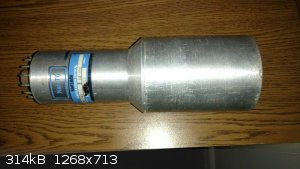
this one is a sodium iodide thallium doped scintillation detector, its 3 inches by 3 inches it has two BNC connectors (not pictured)
one for the high voltage DC power supply
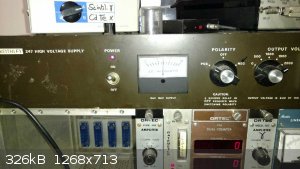
and one for the amplifier .
it doesnt matter what type of high voltage and amplifier you are using as long as its a DC HV and is very stable and the amplifier is rated for gamma
or X rays spectroscopy.
I found that NIM BIN are very affordable ,easy to assemble ,very versatile and very rugged .
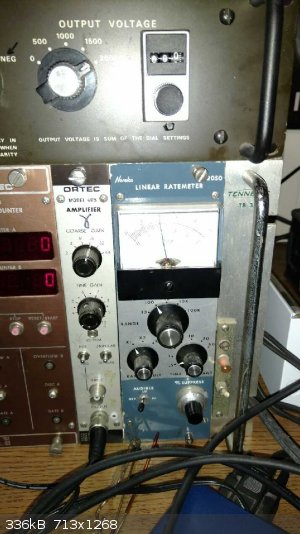
here you can see (above) a rate meter that produces a live display of the activity of the sample placed in the detector.
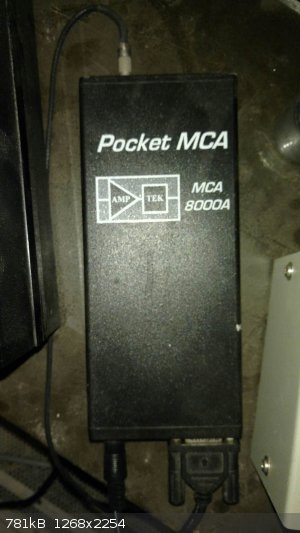
next is the most important and expansive part of the spectroscopy system.
the Multi Channel Analyzer or MCA.
it turns the signal out of the amplifier into a digital, readable signal for the computer to display a spectrum, it only reads voltage NOT energy, the
calibration must be done to reflect on the energy scale.
for that i use a known source of Co60 (availlable to anybody without a license) for about $75 from spectrum techniques/
Cobalt 60 has 2 very visible peaks at 1172Kev and 1332 kev respectfully
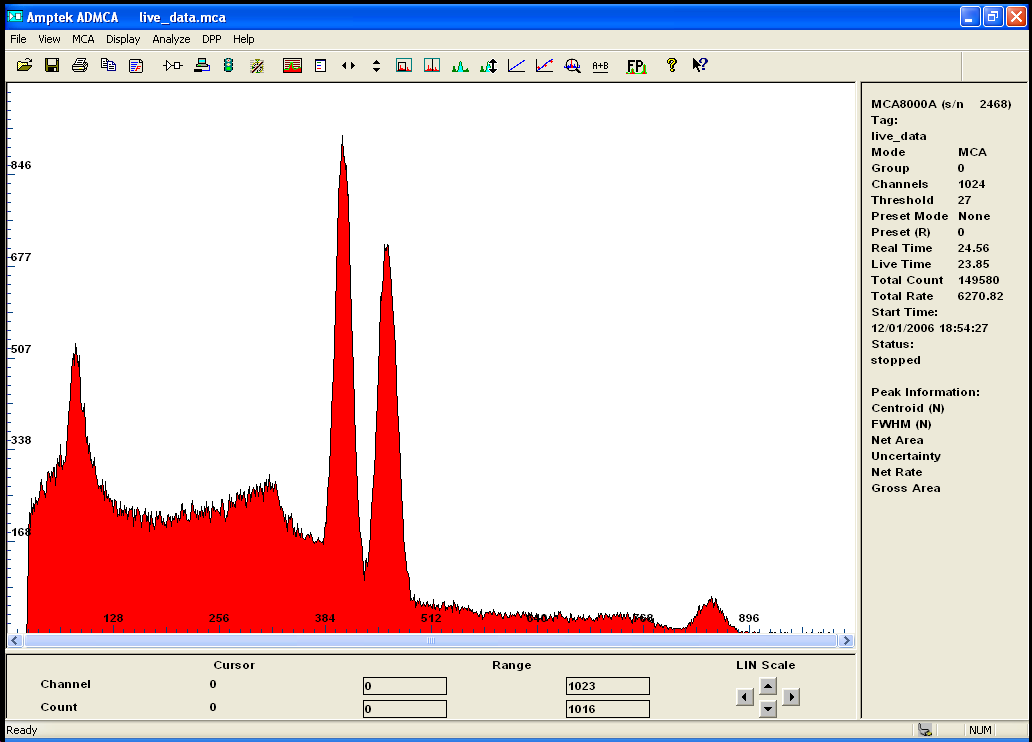
knowing that , the software allows a calibration and by telling it where those two peaks are , the program readjust the scale to match the energy
level corresponding to the energy of the known peaks.
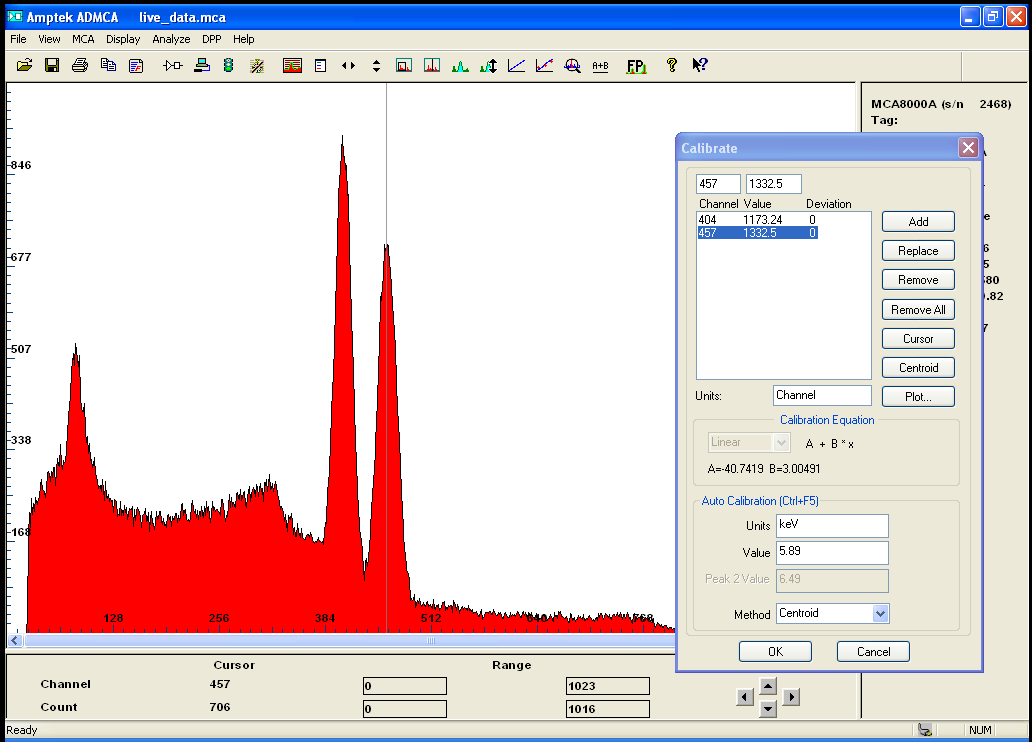
now we are ready to place a sample of unknown origin and by knowing the energy at which each peaks will show up we can determine the radioisotope
responsible for it.
this next sample is a concentrated of thorium ore.
the software has a bank of energy peak already uploaded in its database so we can move the cursor on the spectrum where the peaks are and it will
automatically match it with a peak in its records.
if not, there is plenty of books, data sheets, software, the internet, etc.. to look for the energy level of any peaks found on the spectrum.
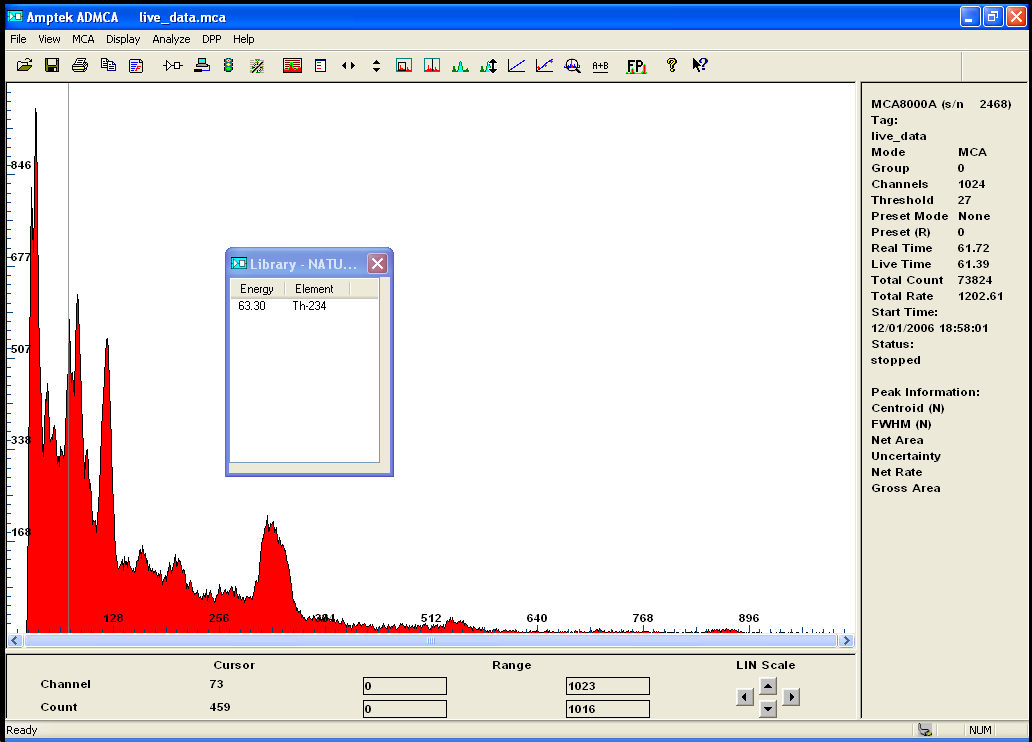
here the 63.3 Kev line matches the Thorium234 energy line.
there is always a certain level of uncertainty (as in science in general) and the detector is not precise enough to seperate very closed peaks (within
about 15Kev) but it is good enough for a reasonable estimate of the radio nucleide involved.
it is precise and sensitive enough to detect potassium 40 in ashes or even bananas, the spectrums can be saved and compare to others which allows to
determine with accuracy the presence (or absence ) of Radium228 in pottery and dirt.
but it only detect gamma rays with energy between 50Kev and 3000kev, which is where most radio gamma emitters are.
|
|
|
IrC
International Hazard
    
Posts: 2710
Registered: 7-3-2005
Location: Eureka
Member Is Offline
Mood: Discovering
|
|
Very nice. I keep forgetting to ask you but do you know of a way sans the LN2 and other equipment to test the Canberra to be sure it is working? Got
it as surplus from a lab that had closed down.
"Science is the belief in the ignorance of the experts" Richard Feynman
|
|
|
neptunium
National Hazard
   
Posts: 989
Registered: 12-12-2011
Location: between Uranium and Plutonium
Member Is Offline
|
|
nope! the only way would be to use a cryocooler or an helium cryo pump, this detectors MUST be cooled
|
|
|
IrC
International Hazard
    
Posts: 2710
Registered: 7-3-2005
Location: Eureka
Member Is Offline
Mood: Discovering
|
|
I thought so as well but still have the number for the person who ran the maintenance dept. for all equipment in the lab. Said it was as pristine as a
model that age can get, was never run without all safeguards in place and never allowed to get near even the highest safe temperature. Was still in
perfect condition the lab merely ran out of grant money and cutbacks ended hope for new grants. They sold surplus all equipment to cover debts to
contractors. What sucks is he said all the other pieces to the system were in a different lot that sold way below cost. I could have had it all but
during those years I was not familiar with this detector and never bothered looking at the amplifiers. Far too expensive now so I guess I will
consider ebay.
"Science is the belief in the ignorance of the experts" Richard Feynman
|
|
|
| Pages:
1
2
3
4
5 |